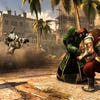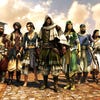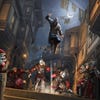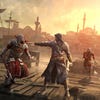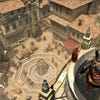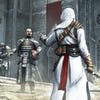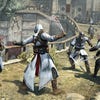Assassin's Creed: Revelations
Turkish delight on a moonlit night.
There's long been a link between Assassin's Creed and Metal Gear Solid, and it goes deeper than the furtive glances exchanged in various throwaway references to each other over the past few years. It goes deeper, too, than the murky tangle of their respective plot lines, interminable to all but the most dedicated scholars of the game's own brands of high-minded nonsense.
Game characters live and die in the blink of an eye, but rarely do we ever see them grow old. Yet Metal Gear Solid introduced an older, more forlorn Solid Snake in Guns of the Patriots, and now it's Assassin's Creed turn to grey at the temples as it bring us an older, more mature lead in Ezio Auditore.
There's a weariness to Ezio, a cool wisdom sitting alongside a humanity that's sadly far from commonplace in the medium. "I think Ezio is one of the most influential characters in the gaming industry," creative lead Alexandre Amacio says in what's only a slight overstatement, "and he is because he's a real character. He's not a static fake sort of character. He's had a beginning - and you've seen him being born - and you've lived through his entire narrative curve. Having him be older reinforces that, and makes him all that more real and all that more powerful."
Ezio's not the only character in Revelations - Altair returns, as does Desmond Miles as he plummets into the darker recesses of the animus - but he's certainly the star once again. The perhaps unintended hero of Assassin's Creed, Ezio has quickly eclipsed Desmond as the lead of the series - and there's a sadness knowing that after Revelations he'll be exiting the stage.
For Assassin's Creed it's not quite the end - Desmond's own story, and indeed the plot line started with 2007's Assassin's Creed is, as we recently revealed, to be finally wrapped up next year - but the series is finally beginning to move towards a conclusion of sorts.
The three separate strands of Assassin's Creed's previous entries are slowly being strung together - while Desmond lies comatose, Ezio flees in pursuit of the Masyaf keys left by Altair and finds himself in Constantinople. As a backdrop it's thematically perfect - straddling two continents, with Europe and Asia meeting either side of the Bosphorus waterway that splits the city in two, it's the crossroads of the world and the perfect meeting point for the series' far-flung protagonists.
It's also, helpfully, a quite stunning location. "Very early in the process, Constantinople just jumped out," Amacio says on choosing Revelation's city, "It's a hub of different cultures - ever since ancient times, you have the Greeks, the Romans, the Byzantines and then the Ottomans - it's littered with various different monuments to explore. It has that richness."
Constantinople's historical richness is met with an architectural one: it's a vivid confusion of styles and influences, split here into four distinct districts. First there's Galata, where the European touch is felt; designed primarily by Italians, it's constructed from the same kind of refined stonework that's typically framed Ezio's past adventures.
Constantine, on the other hand, is a world away, a more impoverished district that's conversely a maze of colour. Rotting wood gives way to vibrant red and orange fabrics, which themselves blend brilliantly into the chaos of the adjacent Byzantine district, a mess of merchants that provides a constant hum of activity. Finally there's the Imperial district, cast in stone that belies the influence of the East and where Constantinople's most imposing sight can be found.
The Hagia Sophia stands proud over the city, a stunning embodiment of the flux that's forever gripped the city. First an Orthodox and then a Roman Catholic Cathedral, at the time of Revelations it's a mosque, and a focal point of the Ottoman Wars that are slowly escalating in the background.


